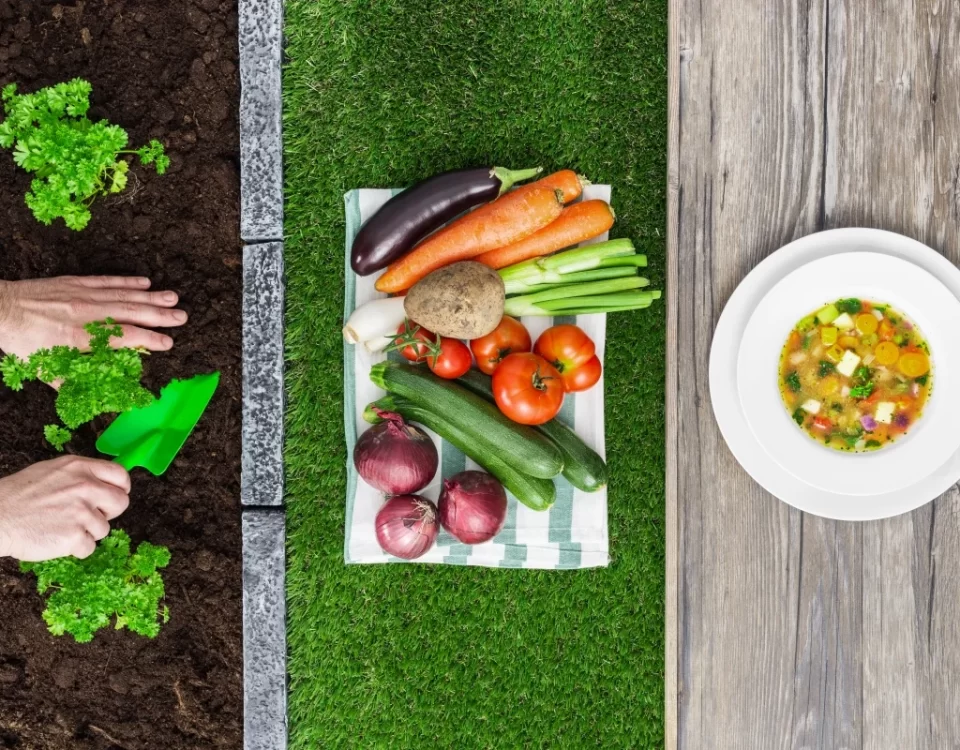Future of Retail and Ecommerce in Pakistan

Exploring Gratitude Trends on Social Media and User Engagement
November 10, 2023
All You Need to Know About the Farm-to-Table Movement
November 21, 2023Pakistan’s economy had been growing steadily until the second half of 2022, with a GDP growth of 6% in FY2022 compared to 5.7% in FY2021. However, the country faced political pressures, global turmoil, and economic vulnerabilities, which are expected to significantly impact growth prospects in FY2023, according to the Asian Development Outlook (ADO) April 2023 report.
The retail industry in Pakistan experienced a decline in sales due to inflationary pressures and the aftershocks from the flood. As an importer of oil and exporter of agricultural commodities, Pakistan faced inflationary pressures due to the global hike in oil prices, forcing consumers to spend less. The nationwide floods in 2022 further worsened the situation by depleting the country’s food and livestock stocks.
The challenging external environment, ongoing foreign exchange crisis, and tighter macroeconomic policies led to a significant increase in commodity prices, particularly in the Transport and Food and beverages sectors.
Trends that Kept Pakistan’s Retail Industry Afloat
The retail industry in Pakistan has faced many challenges, but it has managed to stay afloat because of four significant trends.
Trend 1: Informal retailers & e-commerce keeping the momentum going in Pakistan
One of these trends is that small shops and e-commerce have helped to keep sales going. These informal shops offer lower prices than bigger stores, so people prefer to buy from them to save money. The COVID-19 pandemic also made people start shopping online more, because it was safer. Even after the restrictions were lifted, people still like to shop online because it’s convenient, and they can find a wide range of products at different prices.
Trend 2: Retailers are observing expansion to medium sized cities
Pakistan’s retail industry is undergoing a transformation as modern and grocery retailers are focusing on medium-sized cities. The Federal Government Employees Housing Authority (FGEHA) has launched housing projects in eight cities, including Rawalpindi, Islamabad, Lahore, Peshawar, Quetta, Multan, Faisalabad, and Karachi, which will increase the population of these cities. Consequently, large retail establishments are expanding to these cities to tap into a wider consumer base. This shift also presents an opportunity for retailers in urban areas as demand increases. Urbanization is expected to rise from 42% in 2022 to 43% in 2023, creating more demand and opportunities for retailers in these areas.
Trend 3: Digital payment platforms empowering consumers
Digital payment platforms are empowering consumers in Pakistan. The availability of e-commerce platforms and a wide range of product categories, along with more affordable options, has led to a shift towards online transactions instead of traditional brick-and-mortar channels. Retailers are adopting various payment methods to make the payment process easier for consumers, including paper, electronic, point of sale (POS), online, and mobile payments. The State Bank of Pakistan introduced ‘Raast’ in 2021 as the country’s first digital payment system for online transactions. Additionally, the implementation of Quick Response codes in 2022 has further streamlined the payment process, providing convenience for consumers.
Trend 4: Flexible payment methods enabling consumer spending
To enhance consumer spending, retailers in Pakistan are taking steps to address inflationary pressures. They are partnering with banks to offer flexible payment options that give consumers more purchasing power by allowing them to delay payments. For instance, in 2022, Carrefour collaborated with Bank Alfalah to introduce the “Buy Now, Pay Later” initiative, which encourages buyers to make purchases even with limited budgets. However, the growth of the retail industry requires addressing challenges such as secure online payments, limited connectivity in rural areas, an inefficient logistics system, and the need for more training for the workforce and businesses.
The Future of Retail and E-Commerce in Pakistan
Pakistan is currently in a recovery phase with support from various countries and organizations like the International Monetary Fund (IMF). The government’s increased spending is expected to offset the damage and supply shocks experienced in the first half of the fiscal year (July-December 2022). By implementing sustained macroeconomic policies, carrying out reforms, and improving external conditions, Pakistan’s GDP growth could improve by up to 2% by FY2024.
In terms of retail and e-commerce, Pakistan is making significant progress in enhancing retail sales capabilities. This is being achieved through the utilization of e-commerce platforms and tapping into untapped retail market demand by expanding into new locations. The country’s digital strategy, combined with the growing adoption of e-commerce platforms by Pakistani consumers, presents an opportunity for additional growth in retail sales. The future of retail and e-commerce in Pakistan holds promising prospects.
E-commerce giants extending their presence in Pakistan
Pakistan’s e-commerce industry is rapidly expanding with the presence of major players such as Amazon and Alibaba. The country has received investments from various countries for e-commerce and related services, including last-mile delivery, payment systems, and partnerships. Amazon’s entry into the market in May 2021 after the lifting of the ban is expected to boost e-commerce sales significantly due to its extensive range of products and global popularity. Additionally, Alibaba’s establishment in Sialkot in 2022 has put Pakistan on the international e-commerce map, providing sellers with greater visibility and access to domestic and international markets. This is expected to increase the country’s export trade.
Organized retailing to expand significantly
More big grocery stores and hypermarkets are expected to grow in an organized way. Even though smaller stores will still be popular, the bigger ones are going to get bigger. Pakistan’s increasing influence in retail and trade will attract more companies from around the world to start businesses there. Even though Pakistan is just starting, they’re already working on making it easy to buy things online and use digital money. This new opportunity will make it easier for smaller businesses to join the retail and online shopping world and benefit from the growing market.
Warehousing and economic zones to promote growth
Warehouses and special economic zones are going to help the country grow. The China-Pakistan Economic Corridor (CPEC) is bringing in more investments for building special economic zones like Rashakai, Dhabeji, Bostan, and Moqpondass, along with the Gwadar Port and free zone. CPEC is also helping to construct industrial cities, where more warehouses will be set up to support the increased trade from the project. As e-commerce is getting bigger, there’s a need for better storage places, so the country will see more modern warehouses with technology and digital tools for e-commerce businesses.





